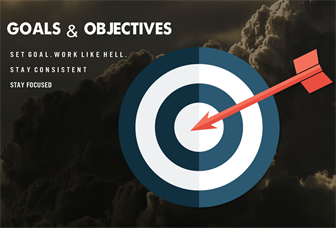
How Successful Entrepreneurs Build Wealth
SQI Security Entrepreneur Series 58
Mindset Matters
Introduction:
Virtually everyone wants to boost their wealth. This includes both making more money and better managing the money they make. However, learning how to increase one’s wealth is not that easy to do, even though the steps to doing it aren’t that hard. In essence, it takes a good deal of discipline to repeat the steps necessary to build wealth. In other words, you need to learn good wealth building actions and repeating those actions over and over again so that they become almost automatic.
Hence, you need to learn good wealth-building habits so that you can increase your wealth and live a higher quality of life. This book will show you exactly what habits are and how they work. Then, it will dive into what are good habits, bad habits, and the habits in between. It will then dive more into the topic of bad habits and how they can be phased out of your life. It will then show you how to form good habits and ensure you stick to them.
You’ll then see why a support system is important to ensure that you stick to those good habits as time continues. You’ll learn how to start small in your quest to rid bad habits and obtain good habits, creating one new wealth habit at a time. Finally, you’ll learn how to rinse and repeat the process of building new wealth habits and maintaining all of the ones you have adopted.

EXPLORING HABITS AND HOW THEY WORK
A habit is a behavior that is repeatedly done until you almost don’t know that you are even doing it. This shows that habits are not behaviors or actions that are acquired overnight; they take time to form as part of our collective actions.
This means that both good and bad habits will not form overnight, and that bad habits will not be broken overnight either; it takes time and an unconscious effort to form a habit. Therefore, you must know that a habit is something that only comes via time and repeated action. This includes wealth-building habits; you will not improve your wealth overnight, as you will not gain these new wealth-building habits overnight.
Take the time, effort, and focus necessary to learn those habits, and they will serve you well and help to improve your wealth over time. In order to form a habit, you must do the action repeatedly to the point where you almost don’t know that you are doing it. In fact, it’s easier for other people to spot that you are doing it and recognize it as a habit rather than you yourself. This is often why bad habits are so difficult to break; we don’t even recognize ourselves as doing it until usually someone else points it out. The brain likes to develop these habits because it can conserve its mental energy toward another task while it engages in the habit. This is a key reason why people form habits and why we are very unaware of the fact we have specific habits.

GOOD HABITS VERSUS BAD HABITS AND IN BETWEEN
You learned in the last chapter that a habit is an “acquired behavior pattern” that is repeatedly followed until the action almost becomes involuntary to where you are almost unaware of the repeated action. You also learned the three-step “habit loop” process that leads to us acquiring habits, and that it takes a considerable amount of time to form a new habit. Note that this holds true for both good and bad habits.
In truth, the only real difference between good and bad habits is that the acquired behavior pattern is a good action or a bad action as defined by the majority of society. Therefore, you need to determine what good habits you want to adopt, then repeat the good action that constitutes that habit repeatedly until you do it automatically without realizing it. Similarly, you need to recognize the bad habits you want to abolish, then avoid repeating the bad action that constitutes that habit continuously until you automatically do an alternative action instead that is considered better than that bad action.
This involves doing alternative actions that “break” the bad action you repeatedly do- this is how you will break the bad habit. As mentioned in the last chapter, it will take time to “rewire” your brain to dispose of the bad habit and take up the new good habit. It varies for everyone in terms of the amount of time it takes, and it also depends on the action involved. Actions that take more effort will take a longer period of time to adopt as habits compared to those actions that take less effort.

DEFINE BAD HABITS AND PHASE THEM OUT OF YOUR LIFE
As we discussed in the last chapter, the only real difference between good and bad habits is that the behavior is considered good or bad by most of society. However, both good and bad habits are formed in the same way: Through repeated action to where the action almost becomes involuntary and the brain focuses its mental energy elsewhere because the action is almost automatic.
As a result, bad habits are behaviors considered bad by most of society and are repeatedly done by the person. The person needs to realize the bad action that he/she continues to do; this is the only way he/she is going to be able to take alternative actions needed to remove the bad habit from his/her life. As was discussed earlier, oftentimes, we don’t even recognize the habits we form; this is where others will usually notice them and mention them to us. We become so immune to the action because it seems so natural to us that others usually have to point out the action to us. In most cases, the action is negative, and they are pointing it out because it’s an issue we have to correct.
Now that we are aware of the repeated bad action, we can take the needed steps required to break this bad habit and replace it with a good habit. As has been mentioned before, this will NOT be an overnight process, and depending on how quickly you adopt new habits and the complexity of the action(s) involved, it could take a few weeks to several months to adopt the new habit.

